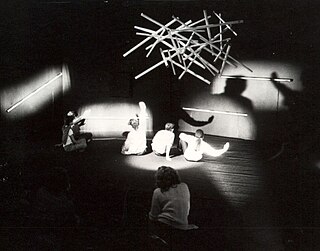
Interactive art is a form of art that involves the spectator in a way that allows the art to achieve its purpose. Some interactive art installations achieve this by letting the observer or visitor "walk" in, on, and around them; some others ask the artist or the spectators to become part of the artwork.

Electronic art is a form of art that makes use of electronic media. More broadly, it refers to technology and/or electronic media. It is related to information art, new media art, video art, digital art, interactive art, internet art, and electronic music. It is considered an outgrowth of conceptual art and systems art.

Eduardo Kac [ɛdwardoʊ kæts; ĕd·wâr′·dō kăts] (1962) is an American contemporary artist whose artworks span a wide range of practices, including performance art, poetry, holography, interactive art, telematic art and transgenic art. He is particularly well known for his works that integrate biotechnology, politics and aesthetics.

Norman White Canadian New Media artist considered to be a pioneer in the use of electronic technology and robotics in art.
Kenneth E. Rinaldo is an American neo-conceptual artist and arts educator, known for his interactive robotics, 3D animation, and BioArt installations. His works include Autopoiesis (2000), and Augmented Fish Reality (2004), a fish-driven robot.
Simon Graeme Penny is an Australian artist, theorist, curator and teacher in the field of Digital Cultural Practices, Embodied Interaction and Interactive art.

Maurice Benayoun is a French new-media artist, curator, and theorist based in Paris and Hong Kong. Often conceptual, Maurice Benayoun's work constitutes a critical investigation of the mutations in the contemporary society induced by the emerging or recently adopted technologies.

BioArt is an art practice where humans work with live tissues, bacteria, living organisms, and life processes. Using scientific processes such as biotechnology the artworks are produced in laboratories, galleries, or artists' studios. The scope of BioArt is considered by some artists to be strictly limited to "living forms", while other artists would include art that uses the imagery of contemporary medicine and biological research, or require that it address a controversy or blind spot posed by the very character of the life sciences.
Mark Stephen Meadows is an American author, entrepreneur, and artist.

Casey Edwin Barker Reas, also known as C. E. B. Reas or Casey Reas, is an American artist whose conceptual, procedural and minimal artworks explore ideas through the contemporary lens of software. Reas is perhaps best known for having created, with Ben Fry, the Processing programming language.
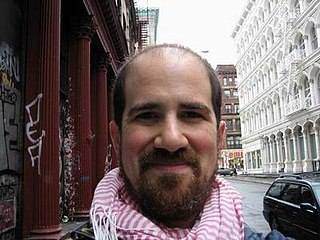
Zachary Lieberman is an American new media artist, designer, computer programmer, and educator.

The TeleGarden was a telerobotic community garden for the Internet. Starting in the mid-1990s, it allowed users to view, plant and take care of a small garden, using an Adept-1 industrial robotic arm controlled online.
Jeffrey Shaw is a visual artist known for being a leading figure in new media art. In a prolific career of widely exhibited and critically acclaimed work, he has pioneered the creative use of digital media technologies in the fields of expanded cinema, interactive art, virtual, augmented and mixed reality, immersive visualization environments, navigable cinematic systems and interactive narrative. Shaw was co-designer of Algie the inflatable pig, which was photographed above Battersea Power Station for the 1977 Pink Floyd album, Animals.

New media art includes artworks designed and produced by means of new media technologies, comprising virtual art, computer graphics, computer animation, digital art, interactive art, sound art, Internet art, video games, robotics, 3D printing, and cyborg art. The term defines itself by the thereby created artwork, which differentiates itself from that deriving from conventional visual arts. This emphasis on medium is a defining feature of much contemporary art and many art schools and major universities now offer majors in "New Genres" or "New Media" and a growing number of graduate programs have emerged internationally. New media art may involve degrees of interaction between artwork and observer or between the artist and the public, as is the case in performance art. Yet, as several theorists and curators have noted, such forms of interaction, social exchange, participation, and transformation do not distinguish new media art but rather serve as a common ground that has parallels in other strands of contemporary art practice. Such insights emphasize the forms of cultural practice that arise concurrently with emerging technological platforms, and question the focus on technological media, per se.

Ars Electronica Linz GmbH is an Austrian cultural, educational and scientific institute active in the field of new media art, founded in Linz in 1979. It is based at the Ars Electronica Center (AEC), which houses the Museum of the Future, in the city of Linz. Ars Electronica's activities focus on the interlinkages between art, technology and society. It runs an annual festival, and manages a multidisciplinary media arts R&D facility known as the Futurelab. It also confers the Prix Ars Electronica awards.
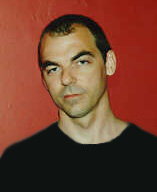
Bill Vorn is a Canadian artist, musician and professor known for his robotic artworks. Vorn was also a member of the band Rational Youth from 1981 to 1983.
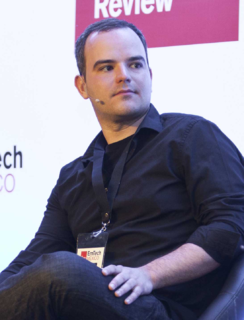
Marcelo Coelho is a Brazilian computation artist and designer. His work focuses on the boundaries between matter and computation, and includes interactive installations, photography, wearables, and robotics. Coelho is currently a Research Affiliate at the MIT Media Lab and creative director at Marcelo Coelho Studio, an anti-disciplinary studio dedicated to technically innovative and experimental work based in Boston, MA.

Luc Courchesne (1952) is a Canadian artist and academic known for his work in interactive art.
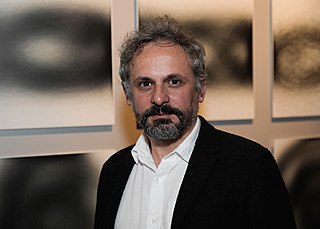
Mauro Martino is an Italian artist, designer and researcher. He is the founder and director of the Visual Artificial Intelligence Lab at IBM Research, and Professor of Practice at Northeastern University. He graduated from Polytechnic University of Milan, and was a research affiliate with the Senseable City Lab at MIT. Mauro was formerly an Assistant Research Professor at Northeastern University working with Albert-Laszlo Barabasi at Center for Complex Network Research and with David Lazer and Fellows at The Institute for Quantitative Social Science (IQSS) at Harvard University.
Alexander Reben is an American artist, researcher and roboticist. He is best known for his artworks created in collaboration with artificial intelligence, and his research in robotics. Reben's work has been exhibited widely in the United States and Western Europe, including the Museum of Applied Arts, Vienna and the Charlie James Gallery. His work is included in permanent collection of the MIT Museum. He currently serves as Director of Technology and Research at Stochastic Labs, a Berkley, California-based nonprofit incubator for artists, scientists and engineers.
















